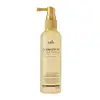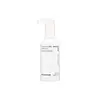What's inside
What's inside
 Key Ingredients
Key Ingredients

 Benefits
Benefits

 Concerns
Concerns

 Ingredients Side-by-side
Ingredients Side-by-side

Water
Skin ConditioningAlcohol Denat.
AntimicrobialPolysorbate 20
EmulsifyingPEG-60 Hydrogenated Castor Oil
EmulsifyingSodium Citrate
BufferingMenthol
MaskingSalicylic Acid
MaskingPanthenol
Skin ConditioningAllantoin
Skin ConditioningNiacinamide
SmoothingHydrolyzed Keratin
HumectantHydrolyzed Collagen
EmollientPropylene Glycol
HumectantHydrolyzed Silk
HumectantPanax Ginseng Root Extract
EmollientHydrolyzed Pepper Fruit Extract
Skin ProtectingLycium Barbarum Fruit Extract
AstringentCamellia Sinensis Leaf Extract
AntimicrobialSmilax China Root Extract
AntimicrobialOak Root Extract
Skin ConditioningXanthium Strumarium Fruit Extract
Skin ConditioningMorus Alba Extract
AstringentPinus Pinaster Leaf Extract
Skin ConditioningBorago Officinalis Extract
EmollientDipotassium Glycyrrhizate
HumectantDisodium EDTA
Butylene Glycol
HumectantPentylene Glycol
Skin Conditioning1,2-Hexanediol
Skin ConditioningCaprylyl Glycol
EmollientPhenoxyethanol
PreservativeParfum
MaskingWater, Alcohol Denat., Polysorbate 20, PEG-60 Hydrogenated Castor Oil, Sodium Citrate, Menthol, Salicylic Acid, Panthenol, Allantoin, Niacinamide, Hydrolyzed Keratin, Hydrolyzed Collagen, Propylene Glycol, Hydrolyzed Silk, Panax Ginseng Root Extract, Hydrolyzed Pepper Fruit Extract, Lycium Barbarum Fruit Extract, Camellia Sinensis Leaf Extract, Smilax China Root Extract, Oak Root Extract, Xanthium Strumarium Fruit Extract, Morus Alba Extract, Pinus Pinaster Leaf Extract, Borago Officinalis Extract, Dipotassium Glycyrrhizate, Disodium EDTA, Butylene Glycol, Pentylene Glycol, 1,2-Hexanediol, Caprylyl Glycol, Phenoxyethanol, Parfum
Water
Skin ConditioningAlcohol Denat.
AntimicrobialPolyglyceryl-10 Laurate
Skin ConditioningButylene Glycol
HumectantParfum
MaskingCaprylyl Glycol
EmollientMenthol
MaskingEthylhexylglycerin
Skin ConditioningChamaecyparis Obtusa Water
MaskingLinalool
PerfumingArginine
MaskingMelaleuca Alternifolia Leaf Oil
AntioxidantCitric Acid
BufferingAlcohol
AntimicrobialLimonene
PerfumingCamellia Sinensis Leaf Extract
AntimicrobialThuja Orientalis Seed Extract
Skin ConditioningPanax Ginseng Root Extract
Emollient1,2-Hexanediol
Skin ConditioningPropanediol
SolventBacillus/Soybean Ferment Extract
Skin ConditioningAcorus Calamus Root Extract
PerfumingTocopherol
AntioxidantChamaecyparis Obtusa Leaf Extract
Skin ConditioningDisodium EDTA
Hydroxypropyl Cyclodextrin
MaskingWater, Alcohol Denat., Polyglyceryl-10 Laurate, Butylene Glycol, Parfum, Caprylyl Glycol, Menthol, Ethylhexylglycerin, Chamaecyparis Obtusa Water, Linalool, Arginine, Melaleuca Alternifolia Leaf Oil, Citric Acid, Alcohol, Limonene, Camellia Sinensis Leaf Extract, Thuja Orientalis Seed Extract, Panax Ginseng Root Extract, 1,2-Hexanediol, Propanediol, Bacillus/Soybean Ferment Extract, Acorus Calamus Root Extract, Tocopherol, Chamaecyparis Obtusa Leaf Extract, Disodium EDTA, Hydroxypropyl Cyclodextrin
Ingredients Explained
These ingredients are found in both products.
Ingredients higher up in an ingredient list are typically present in a larger amount.
1,2-Hexanediol is a synthetic liquid and another multi-functional powerhouse.
It is a:
- Humectant, drawing moisture into the skin
- Emollient, helping to soften skin
- Solvent, dispersing and stabilizing formulas
- Preservative booster, enhancing the antimicrobial activity of other preservatives
Alcohol Denat. is an alcohol with a denaturant property. It is created by mixing ethanol with other additives.
This ingredient gets a bad rep because it is irritating and drying - mostly due to its astringent property. Astringents draw out natural oils in tissue, constricting pores and leaving your skin dried out.
However, alcohol denat. is not all that bad.
Due to its low molecular weight, alcohol denat. tends to evaporate quickly. One study on pig skin found half of applied alcohol evaporated in 10 seconds and less than 3% stayed on skin.
This also helps other ingredients become better absorbed upon application.
Studies are conflicted about whether this ingredient causes skin dehydration. One study from 2005 found adding emollients to propanol-based sanitizer decreased skin dryness and irritation. Another study found irritation only occurs if your skin is already damaged.
Small amounts of alcohol are generally tolerated by oily skin or people who live in humid environments.
The rule of thumb is if this alcohol is near the end of an ingredients list, it will probably not affect your skin much.
Also...
This ingredient has antimicrobial and solvent properties.
The antimicrobial property helps preserve products and increase their shelf life. As a solvent, it helps dissolve other ingredients.
Other types of astringent alcohols include:
Learn more about Alcohol Denat.Butylene Glycol (or BG) is used within cosmetic products for a few different reasons:
Overall, Butylene Glycol is a safe and well-rounded ingredient that works well with other ingredients.
Though this ingredient works well with most skin types, some people with sensitive skin may experience a reaction such as allergic rashes, closed comedones, or itchiness.
Learn more about Butylene GlycolCamellia Sinensis Leaf Extract is derived from the leaves of the tea plant. Black tea, green tea, and oolong tea are all harvested from this plant.
This ingredient has many skin benefits:
This ingredient contains polyphenols, a strong antioxidant. Antioxidants help fight off molecules that damage skin cells.
On top of that, the antioxidants in green tea neutralize free-radicals from the sun. This gives the skin some extra UV protection, but should not replace sunscreen.
Many components of tea have anti-inflammatory properties.
Polyphenols and L-theanine help soothe the skin and reduce irritation. The caffeine in Camellia Sinensis Leaf Extract helps calm inflamed blood vessels.
Other compounds found in tea include: Vitamin Bs, linoleic acid, magnesium, calcium, iron, and zinc.
Research has shown both drinking Camellia Sinensis Leaf Tea and applying it to the skin can help boost skin elasticity and hydration. Studies also show using tea extract may reduce sebum, or oil, production.
Learn more about Camellia Sinensis Leaf ExtractCaprylyl Glycol is a humectant and emollient, meaning it attracts and preserves moisture.
It is a common ingredient in many products, especially those designed to hydrate skin. The primary benefits are retaining moisture, skin softening, and promoting a healthy skin barrier.
Though Caprylyl Glycol is an alcohol derived from fatty acids, it is not the kind that can dry out skin.
This ingredient is also used as a preservative to extend the life of products. It has slight antimicrobial properties.
Learn more about Caprylyl GlycolDisodium EDTA plays a role in making products more stable by aiding other preservatives.
It is a chelating agent, meaning it neutralizes metal ions that may be found in a product.
Disodium EDTA is a salt of edetic acid and is found to be safe in cosmetic ingredients.
Learn more about Disodium EDTAMenthol is a compound found in mint plants, such as peppermint. In its pure form, it is a clear crystalline substance.
Menthol is known for its cooling sensation; however, the cooling is actually from your skin being sensitized. Menthol can worsen rosacea. We recommend speaking with a professional if you have concerns.
Menthol also has antimicrobial properties.
Learn more about MentholGinseng root is a well-loved ingredient in Asian skincare for good reason. It hydrates the skin, soothes irritation, and helps even out skin tone.
In traditional East Asian medicine, ginseng has been used for centuries both as food and as a healing remedy, and modern research continues to confirm its skin benefits.
One of the standout features of ginseng is its ability to improve blood circulation and oxygen delivery to the skin, bringing a fresh supply of nutrients to support overall skin health. It also has antioxidant and anti-inflammatory properties. This helps to protect your skin against damage from UV exposure, pollution, and daily stress.
Additionally, studies suggest that ginseng may help reduce hyperpigmentation by inhibiting tyrosinase, the enzyme involved in melanin production.
There are different types of ginseng used in skincare, and while they all share core benefits, their potency can vary.
Most products use fresh or white ginseng because it’s more affordable. However, red ginseng, produced by steaming the root, contains higher levels of ginsenosides, which are compounds with proven anti-aging effects. These ginsenosides help reduce the appearance of wrinkles and improve skin elasticity.
Note: All forms of ginseng are listed simply as “Panax ginseng” in ingredient lists. We recommend reaching out to the brand if you have questions about which type of ginseng is used in their ingredients.
For general antioxidant benefits, any ginseng extract will do, but for wrinkle care or firmer skin, red or fermented ginseng is often more effective.
In short, ginseng is a powerhouse ingredient that supports hydration, radiance, and resilience.
Learn more about Panax Ginseng Root ExtractParfum is a catch-all term for an ingredient or more that is used to give a scent to products.
Also called "fragrance", this ingredient can be a blend of hundreds of chemicals or plant oils. This means every product with "fragrance" or "parfum" in the ingredients list is a different mixture.
For instance, Habanolide is a proprietary trade name for a specific aroma chemical. When used as a fragrance ingredient in cosmetics, most aroma chemicals fall under the broad labeling category of “FRAGRANCE” or “PARFUM” according to EU and US regulations.
The term 'parfum' or 'fragrance' is not regulated in many countries. In many cases, it is up to the brand to define this term.
For instance, many brands choose to label themselves as "fragrance-free" because they are not using synthetic fragrances. However, their products may still contain ingredients such as essential oils that are considered a fragrance by INCI standards.
One example is Calendula flower extract. Calendula is an essential oil that still imparts a scent or 'fragrance'.
Depending on the blend, the ingredients in the mixture can cause allergies and sensitivities on the skin. Some ingredients that are known EU allergens include linalool and citronellol.
Parfum can also be used to mask or cover an unpleasant scent.
The bottom line is: not all fragrances/parfum/ingredients are created equally. If you are worried about fragrances, we recommend taking a closer look at an ingredient. And of course, we always recommend speaking with a professional.
Learn more about ParfumWater. It's the most common cosmetic ingredient of all. You'll usually see it at the top of ingredient lists, meaning that it makes up the largest part of the product.
So why is it so popular? Water most often acts as a solvent - this means that it helps dissolve other ingredients into the formulation.
You'll also recognize water as that liquid we all need to stay alive. If you see this, drink a glass of water. Stay hydrated!
Learn more about Water